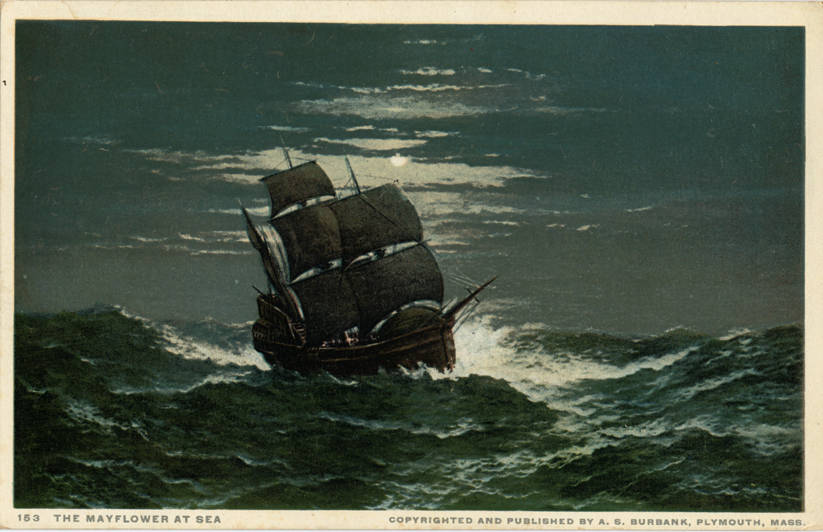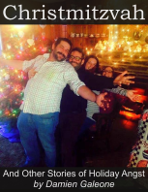
They had started out with two ships. The famous Mayflower and the less famous Speedwell. Their trip had been infamously difficult before even hitting the open Atlantic. The separatists had had to turn back three times due to leaking ships. They’d had to spend a week getting repairs and some pilgrims had been forced to sell their belongings to pay for those repairs and dock fees. Also, they had been swindled and conned. On a third attempt, they made it past Land’s End, but the Speedwell was found later to be overmasted and this caused weaknesses in the ship which caused the leaks. In the end, eleven (insane) passengers transferred to the Mayflower and they set sail to the New World.
Contrary to the cheery pictures many of us grew up seeing in school of pilgrims in suspiciously wide buckles beseeching God from the confines of a ship’s cozy quarters, this was not the case. The Mayflower, perhaps in a rare form of foreshadowing, had transported 200 wine barrels up the Atlantic coast of Europe. But not people. Most people, unless you happen to be related to me, are a bit taller than a wine barrel. Most of the men could not stand upright. The crew
The passage was a difficult one that took just under two months. Seasickness was rampant and everyone – soldiers, adventurers, separatists, and crew – ate salted beef and hardtack made of flour and water. And everyone drank beer. For generations of Americans to come, the pilgrims would represent the first Americans, but they were, for the time being, English. And English people did not drink water, they drank beer. Beer, it is said, is the 17th century’s water. It was full of nutrients, vitamins, taste, alcohol. Oh and it wouldn’t kill you after putting you through a week of debilitating stomach pains and explosive diarrhea.
As they traversed the stormy horrifying Atlantic, their concerns seemed to be twofold. Their primary concern was that their rickety ship would split apart, sending them all into the frigin waters of the Atlantic. The Atlantic that many if not most of them firmly believed held sea monsters, a belief probably not thwarted by the sightings of sharks and whales. Without those beasts, however, it’s important to remember that should their ship go down, they would die. There was no beacon, no SOS, they would simply die in a horrific manner in the middle of a monstrous ocean on the way to a place which held salvation, but also, at best unknown strife, and at worst, more monsters.
Their second concern was running out of beer. In the back of the boat were large tanks of beer and as they began dwindling late in the voyage, Captain Jones became antsy. Once he began rationing the beer, the health of those on board suddenly began to turn for the worse. People came down with scurvy and other stomach ailments. Beer was not only nutrition, but it lightened the mood and steeled the spirit. A beer with its low alcohol content and high caloric content was essential and if it was running low, there was going to be a problem.
So when they spotted land at Cape Cod on November 9, they were elated. Who hasn’t longed for arrival and the beer it promises. But the problem was that Cape Cod wasn’t their destination. It’s perhaps overlooked that though the pilgrims were going to the New World, the New World wasn’t a wide open free place. It belonged to people. So the separatists were allowed to go to the New World, but only to the Virginia Colony, which ran from Virginia to the Hudson Bay Valley, which was significantly to their south. Their tactical error was due to a heavy storm that had thrown them off course early in their voyage and crude sailing tools. And let’s not forget beer. In a time when most men’s drunken aim can’t find a urinal imagine trying to hit a spot on a continent 4,000 miles away when you’re washing down every meal with beer and rum.
Captain Jones made a left and headed south. Unfortunately, the ninety miles through which they had to traverse was called Pollock Rip, a maze of dangerous shoals, hard breakers, and terrible undercurrents that had and has trashed hundreds of boats. An estimated half of all shipwrecks on the east coast lie within this stretch. If they went ahead with the plan, they faced almost certain doom. Captain Jones made the call – they turned back and landed in Cape Cod.
The implications of this are such: instead of landing where they were legally sanctioned, the pilgrims landed in a hostile, unknown area, and all because they needed a beer. In other words: the story of America.
Their hardships didn’t stop there, though, as we all know. In fact, they were only beginning. While only one man died on the journey, half of the pilgrims died in that first year. To make matters worse for the pilgrims, they ran out of beer. The beer in the boat’s casks were clearly marked and while the crew had some beer, the pilgrims were out. Captain Jones had to think about his beer rations for the return journey and so was unwilling to share with the pilgrims. But when William Bradford begged for a beer while he suffered a brutal illness, Captain Jones evidently relented.
Among the first structures built by the pilgrims was a brewery, for they needed beer, and then a tavern, for they needed a place to drink that beer away from their wives. They used what they had – barley, oats, even corn. It is the story of America in a few short, small clips of information.
A decade later the puritans who took the Aribella across the same ocean had seemingly learned the lessons of their predecessors. They had 10,000 gallons of beer, 120 hogshead of malt, and 12 gallons of aqua vitae. Additionally, each family brought a store of its own liquor and every member of the journey brought a hogshead of wheat, rye, and barley seed. When they were done drinking the beer, they would make more beer.
If you’ve ever stopped on a journey because you desperately needed a beer, only know that you are emulating our greatest forefathers. Have yourself a beer. And then have yourself another beer.
